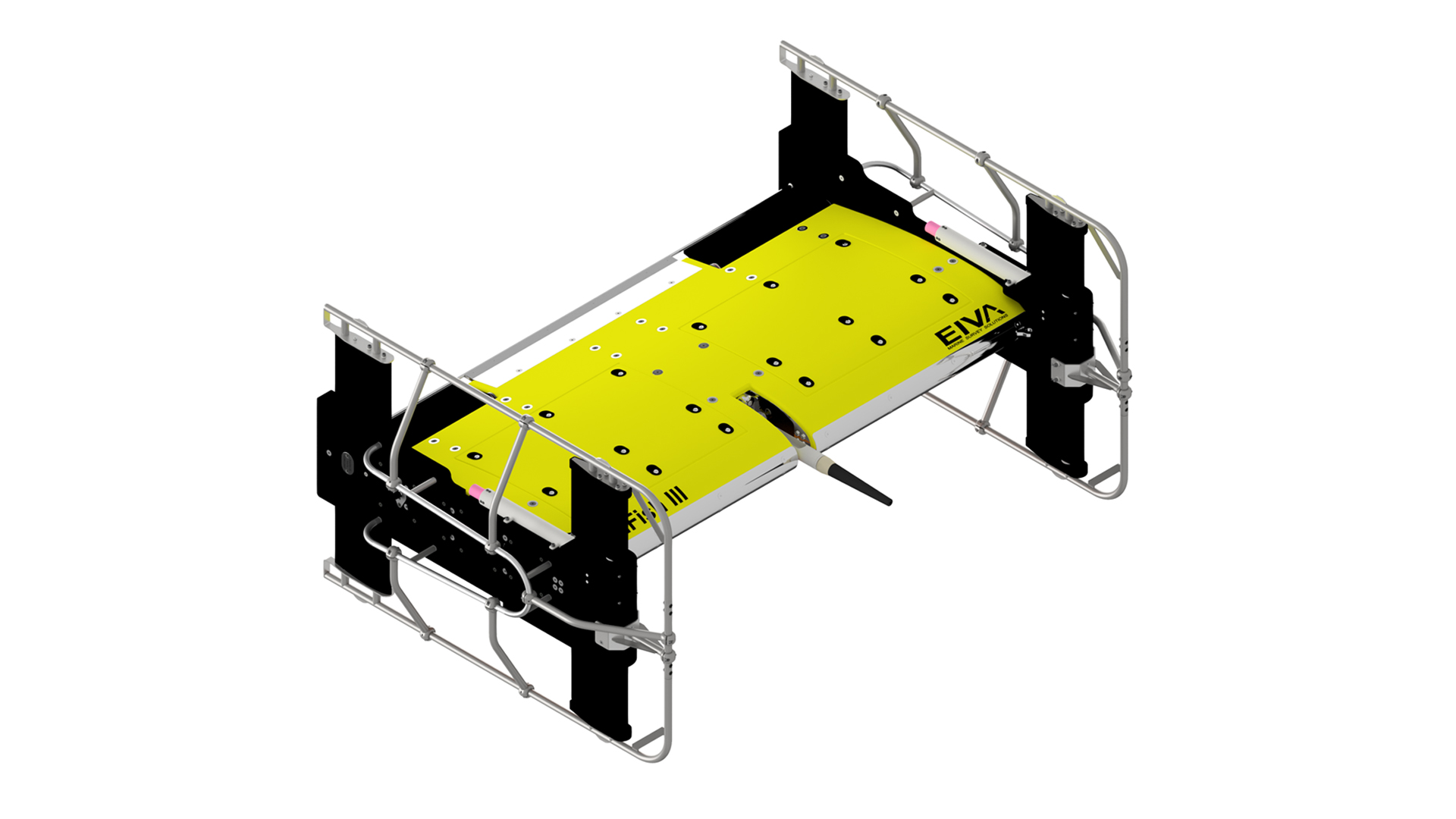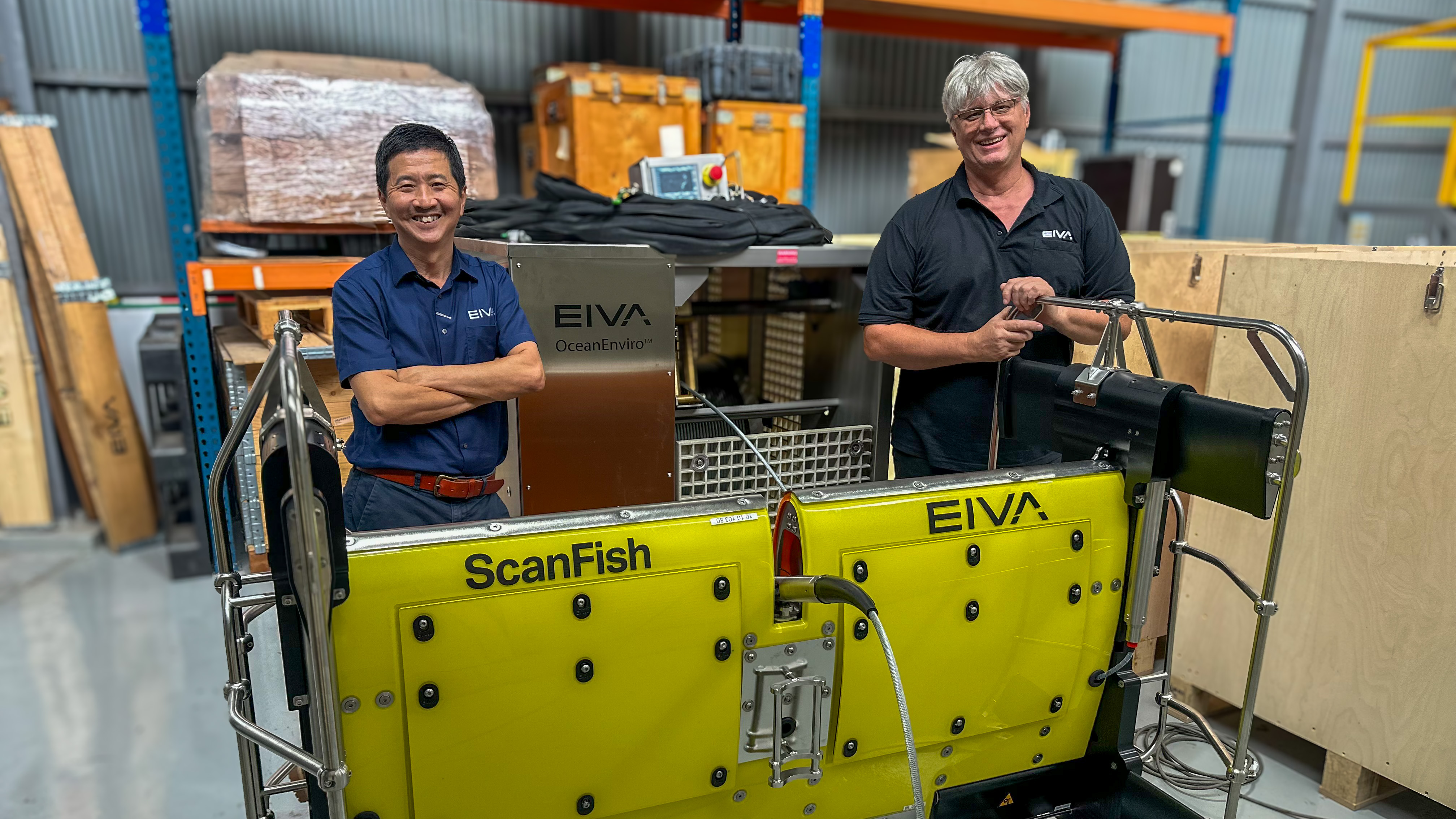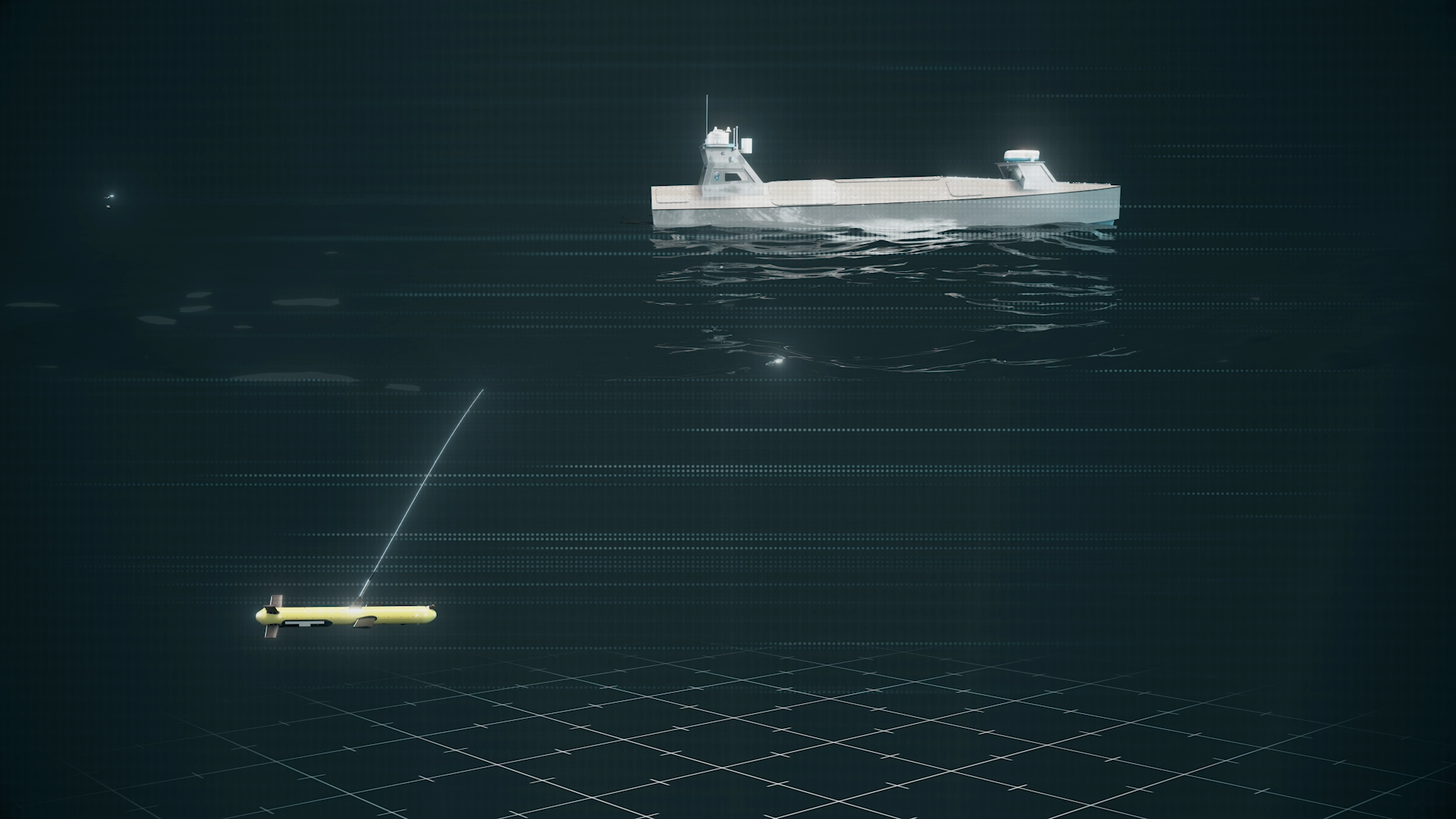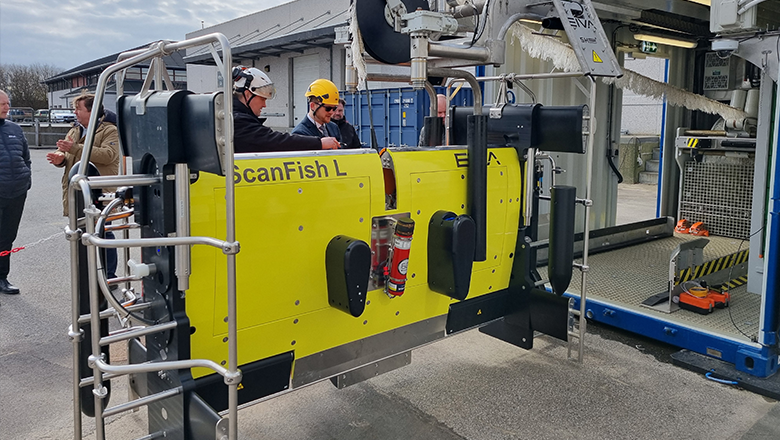Proven technology for safe, cost-effective UXO surveys
Intelligent wide-sweep remotely operated towed vehicle
EIVA's remotely operated towed vehicles (ROTV), ScanFish and ViperFish, have the ability to automatically follow the seabed at a defined height. This makes these ideal for tasks where you want your sensors very close to the seabed.
Unexploded ordnance (UXO) surveys are typically conducted with sensors looking into the seabed – eg magnetometers – and since the detection range of such sensors is typically only several meters, it is essential to not have the sensors too high up in the water column. This is the reason that leading UXO survey companies have long relied on the original ROTV by EIVA, ScanFish – either towing magnetometers, or towing a fixed gradiometer frame.
Find the right ROTV system to sail you forward
EIVA’s ROTVs come in configurable setups to suit your UXO survey operation, ranging from ScanFish Katria, which tows magnetometers on a frame, to ScanFish – Equinox, which is fully integrated with a multi-aperture sidescan sonar providing the highest quality data swaths possible with sidescan sonar. It is also available in different sizes for larger payloads, such as the ScanFish XL which can be fitted with very large sensors such as the PanGeo SBI.
The ViperFish ROTV is optimised for towing by smaller vehicles, in particular autonomous unmanned surface vehicles (USVs) – providing an essential building block for developing autonomous geophysical site inspection systems.
Key features
- Automatic control software, making the operation of EIVA’s ROTVs highly automated (although training is recommended).
- Follow-seabed, where the ROTV uses an echosounder as altimeter to measure height above the seabed. Typical flying height depends on the terrain, but can be 3-4m or less.
- 3D steering and autopilot, the 3D option enables side-ways steering as well as vertical steering, and the autopilot makes it possible to ensure that the ROTV follows a runline as defined in eg NaviPac.
- Anti-collision, where the ROTV will rise in case of obstacles in order to try avoid hitting them.
- Keep sensors stable – even around steep obstacles, as NaviSuite can provide the ROTV with smoother vertical runlines thanks to early warnings based on DTM (real-time and/or pre-survey).
- Coax or fiber communication, where either single wire coax tow-cables or fiberoptic cables are supported.
- Prepared for magnetometers, the standard ScanFish comes with ports and towing poles for four G882 magnetometers, while ViperFish is integrated with OFG’s Hypermags.
- Custom gradiometer frames, where the ScanFish is ideal for towing a fixed 6, 8, 10-magnetomer non-magnetic frame.
- Additional payload, the ScanFish can carry additional sensors, such as USBL for positioning, camera, sidescan or DVL / speedlog for speed in water measurement.
- Towable by USV, the ViperFish is designed for compactness and the lowest possible drag – plus it is available with its own dedicated winch for USV automated launch and recovery.










